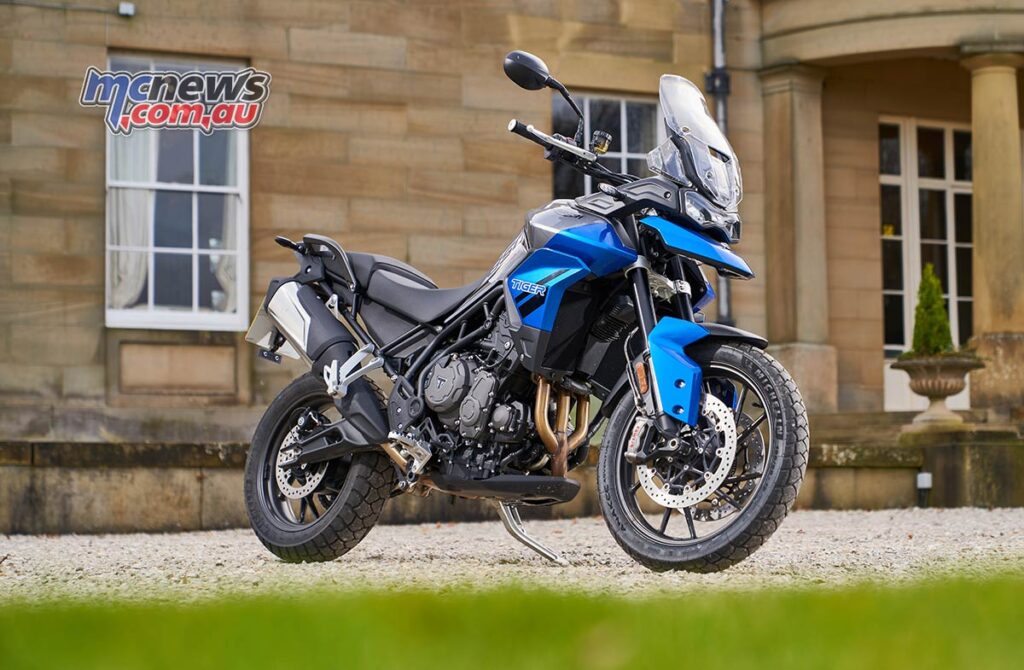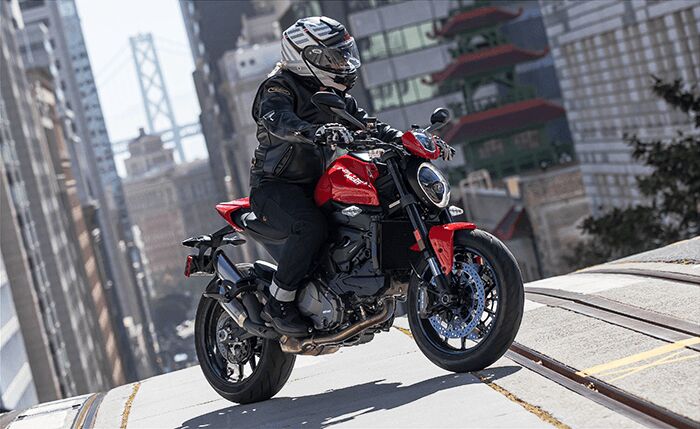Triumph Tiger 850 Sport
For 2021 Triumph has launched this all-new Tiger, the 850 Sport, which replaces the standard Tiger 900. It shares many similarities with the 900, including the same 888 cc capacity, but Triumph has de-tuned the engine and dropped the specification a little while knocking a fair chunk of cash off the price.
Advanced lean-sensitive rider aids and the IMU have been removed, while the suspension is no longer multi-adjustable. However, this cut in specification is mirrored in the very affordable ride away price of $17,890. That is over $3000 cheaper than the base Tiger 900GT and six-grand cheaper than the 900 GT pro. On price alone it’s tempting, because it may just be the most surprising and understated bike of 2021.
Let’s talk money
The saving is hefty; enough for insurance, some top-end new riding gear and a long weekend away touring. The saving could tempt you away from Tiger 900GT. But let’s look at the competition.
BMW has the F 750 GS, which, like the Triumph, performs a similar trick of being described as one thing, a 750, when it’s actually a detuned 853 cc parallel twin; an engine that’s also found in the 850 GS. The 750 GS starts from $16,105, is similar on spec and torque, but is significantly down on peak power compared to the Tiger 850. The BMW F 850 GS has more power than the Tiger 850 and is more desirable than the F 750GS, but is priced from $20,070 Ride Away for the base model.
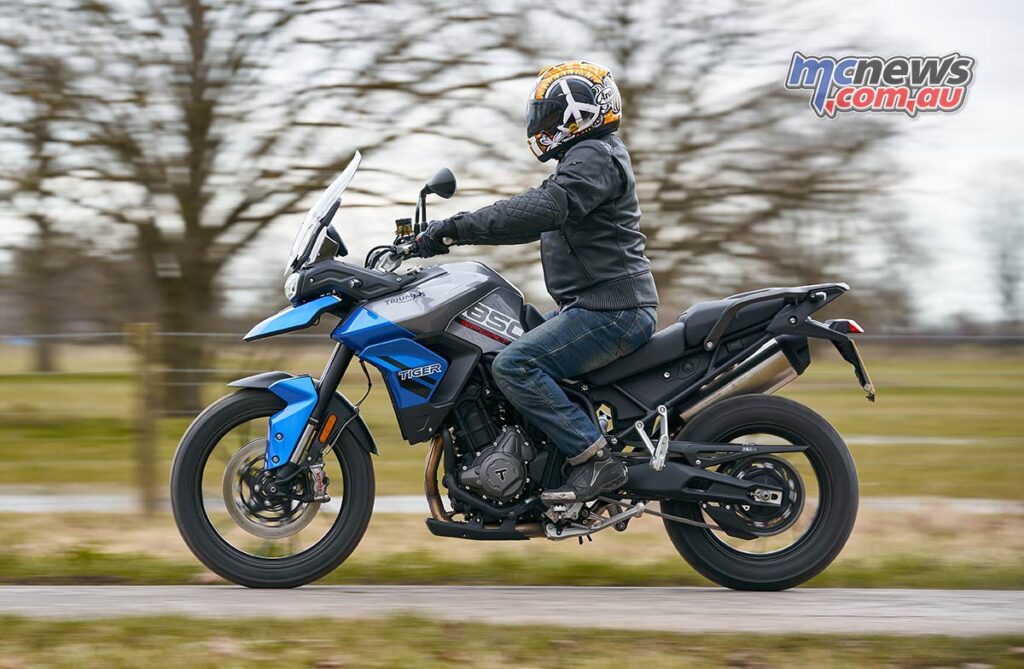
Another bike I would throw into the mix is the Suzuki V-Strom 1050. The big V-Strom was updated in 2019 and edges the Tiger 850 Sport on power and torque, although not by much, and the base model is priced at a competitive 16k Ride Away at the moment. However, the V-Strom is considerably heavier than the Tiger.
Ducati has the 950 Multistrada from $21,500 Ride Away, and KTM has the 890 Adventure at over 22k – these are price points that place them in Tiger 900GT territory. Yamaha has the Tenere 700 at $17,990 Ride Away, but like the KTM it wears a 21-inch front wheel and is more of an off-road specialist than the street biased Tiger 850.
Time for some big miles
Comfort is first-rate on the Tiger 850. The screen height is manually adjustable through a range of 50 mm, and just about do-able on the move, while wind deflectors on either side provide just enough wind protection. The seat and ’bars are both adjustable, and on standard settings the wide ’bars, low pegs, and comfortable seat were virtually faultless compared to similar bikes in the category. Cruise control was missed, as were heated grips and hand guards on those cold mornings, but we have to remember that price against similar spec’ to bikes in this category and price.
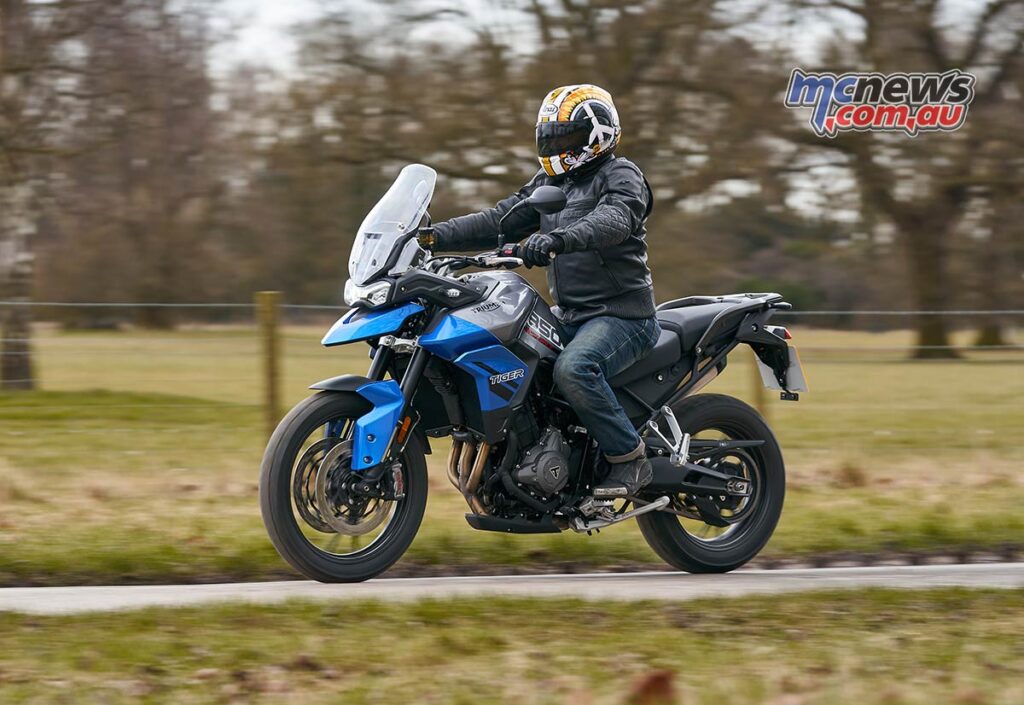
Triumph quote 4.2l/100 km whereas I averaged 5.0l/100 km, although this was mainly on country roads and avoiding the motorway while making that triple sing – and it really does sound good! On a well-behaved run I averaged closer to 4.7l/100 km, but that isn’t bad. The 20-litre tank gives a theoretical range of around 400 km. That distance or close to it, in one stint, certainly shouldn’t be a problem in terms of comfort. There is a high-speed buzz that becomes noticeable at 6000 rpm and above, felt primarily through the pegs, and increases with speed. It’s not annoying but is worth commenting on.
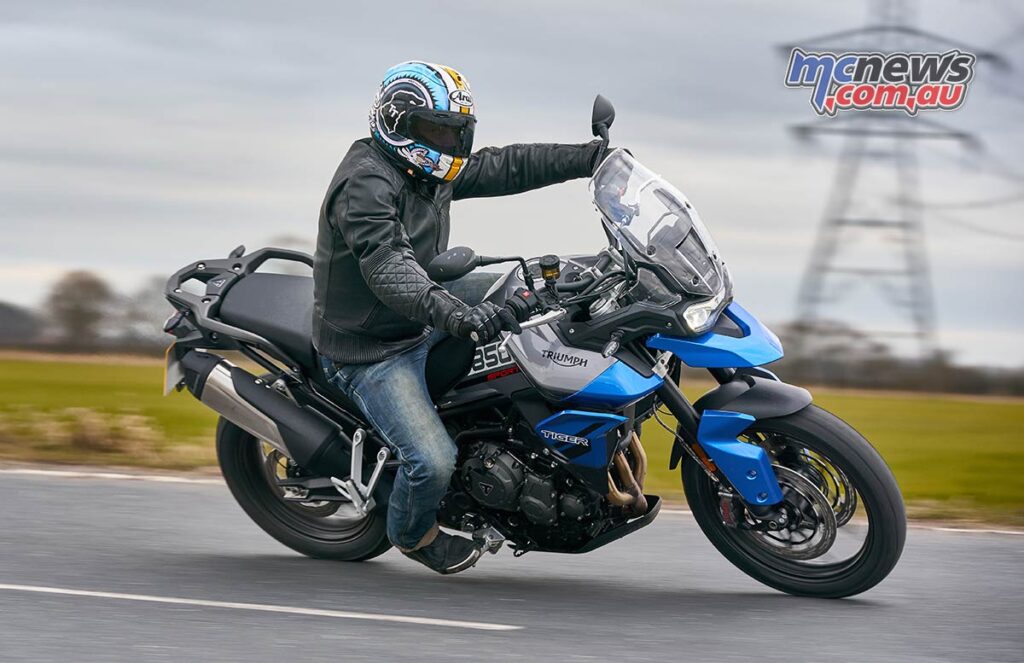
And it goes around corners
To save costs over the more expensive Tiger 900GT, the 850 has lower-spec suspension, with no adjustment on the front and only pre-load on the rear – though the adjuster is remote and easy to access. I was expecting a sharp drop in performance, but the road-tuned Marzocchi 45 mm inverted forks up front and Marzocchi rear shock gave high levels of feedback and support for this type of bike with its long-travel suspension (170 mm – 180 mm). The Michelin Anakee dual-purpose rubber worked well from the off, offering impressive feedback in the cold, damp, and dry.
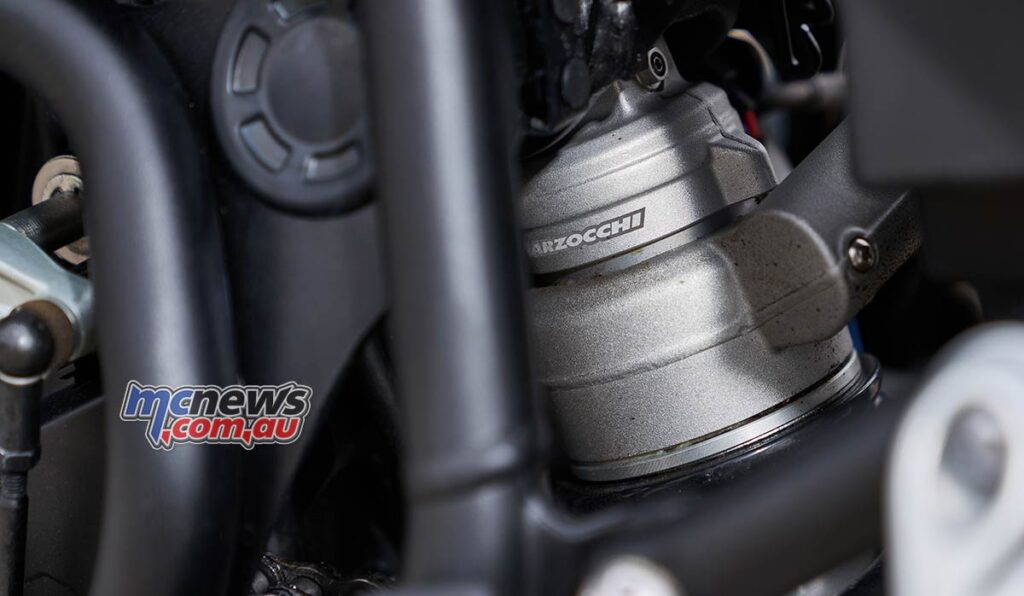
Within a few miles, the Sport and I clicked, and I was all too happy to throw it on its side to almost peg-scraping levels of lean. It gave me a lot of confidence. The wide ’bars allow you to belt it around with relative ease, and it remains unfazed by terrible road surfaces and slimy conditions. When I challenged the Sport with poorly surfaced and even unclassified roads, at speed, it remained stable and sure.
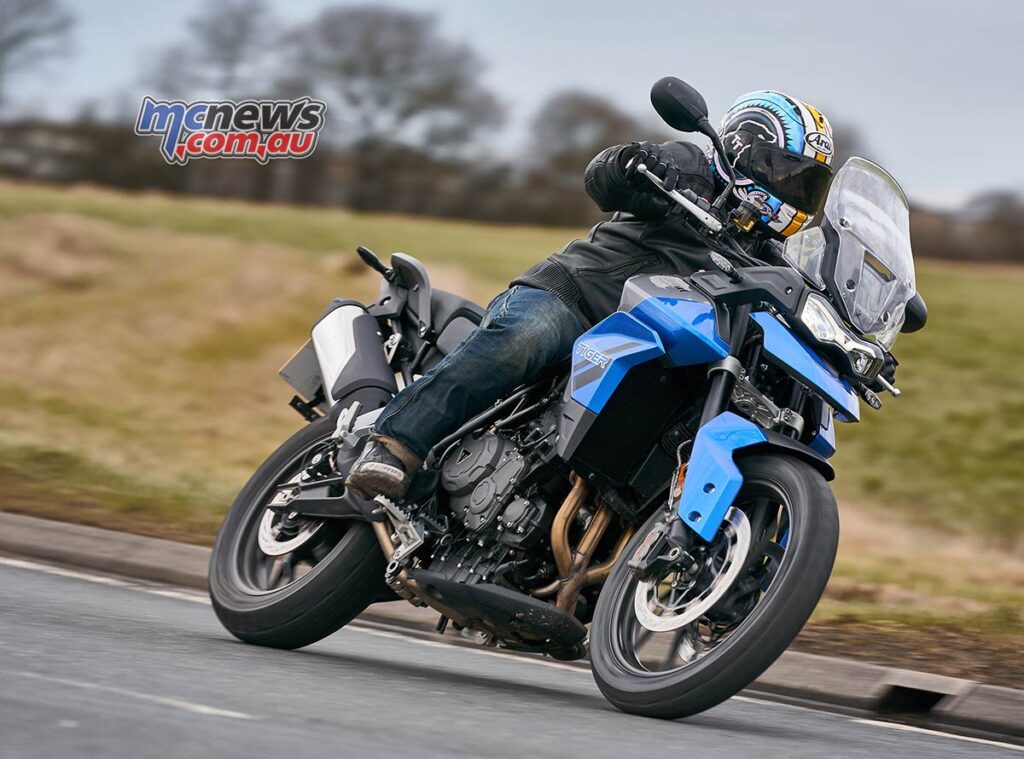
The higher the road speed, the more the front-end starts to lift a little and the rear sits, and the more aware you become of the Sport’s adventure dynamics, particularly its long-travel suspension and large 19-inch front tyre. It doesn’t understeer or run wide, but it does take more effort to flick from side to side at speed.
Around town, it’s nicely poised to complement the smooth fuelling, plus its natural ergonomics make it ideal for less experienced riders. Despite the dual-purpose rubber, it was never really designed to take on anything too seriously off-road, especially with cast alloy wheels. Light off-road work on easy gravel trails is just about within reach, but don’t attempt anything serious. You’ll have to opt for the off-road-biased Tiger 900 Rally if you want to take on some serious dirt.
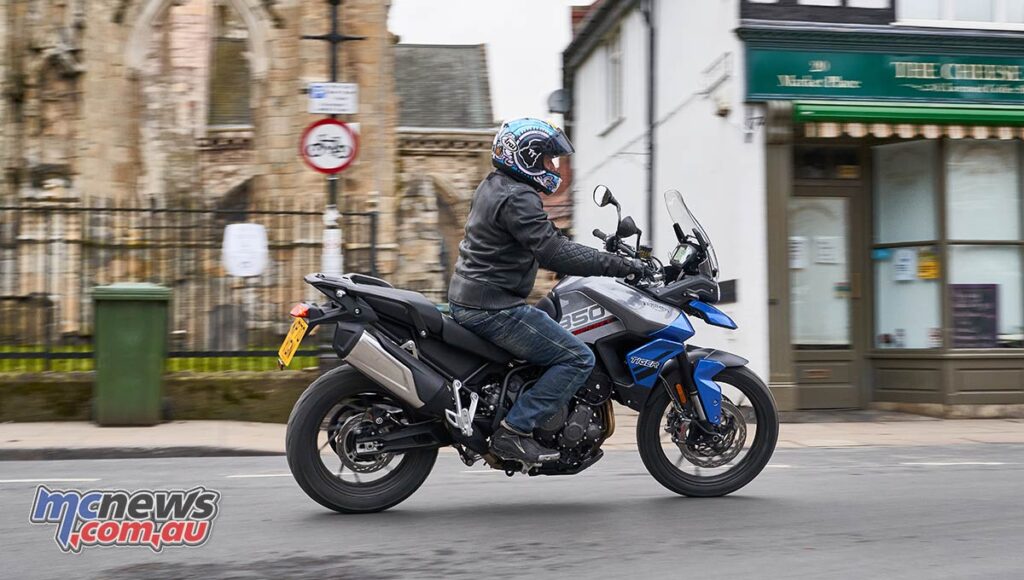
Did someone at Triumph tick the wrong box when they were ordering brakes from Brembo? Why have they fitted top-spec radial Brembo Stylema four-piston calipers? Maybe there was a special from Brembo on a Friday afternoon? I’m not complaining. Far from it – the better the brakes the happier I am. Obviously, the same brakes that are fitted to some superbikes effortlessly haul up the Sport’s 192 kg dry, and are far from being too sharp or aggressive. The ABS isn’t intrusive but, remember, without an IMU there is no cornering ABS as there is on the Tiger 900GT.
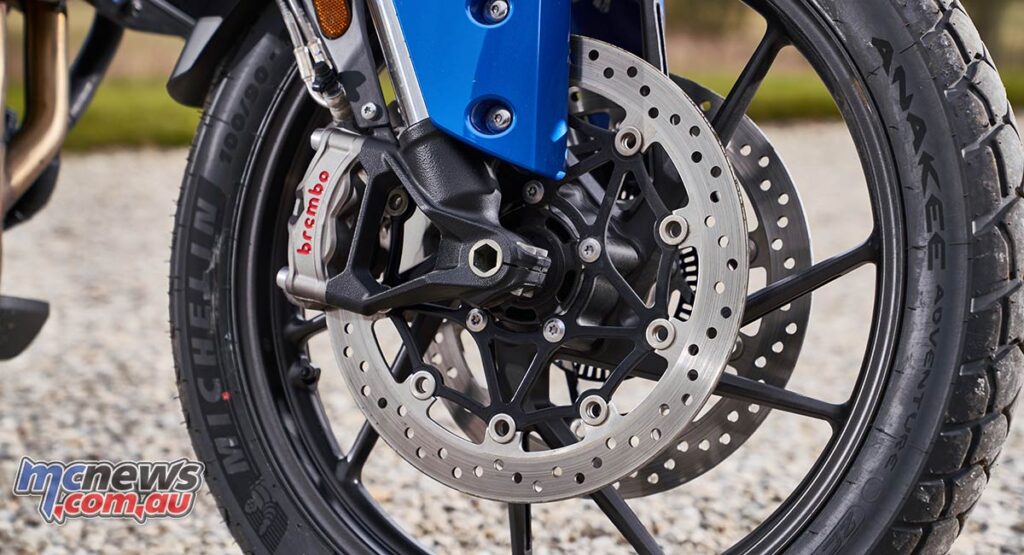
It’s still an 888, not an 850
The Tiger 850 has the same engine capacity as the Tiger 900 range, 888 cc, but has been detuned to make the bike friendlier for new or inexperienced riders. Peak power is now 84 hp @ 8500rpm, compared to 94 hp @ 8750rpm on the older Tiger 900, and peak torque is 82 Nm @ 6500rpm, compared to 87 Nm @ 7250rpm on Tiger 900. On paper a noticeable drop in power, but those peak power and torque figures are produced lower down in the rev range, thus making the new bike more usable and rider-friendly.
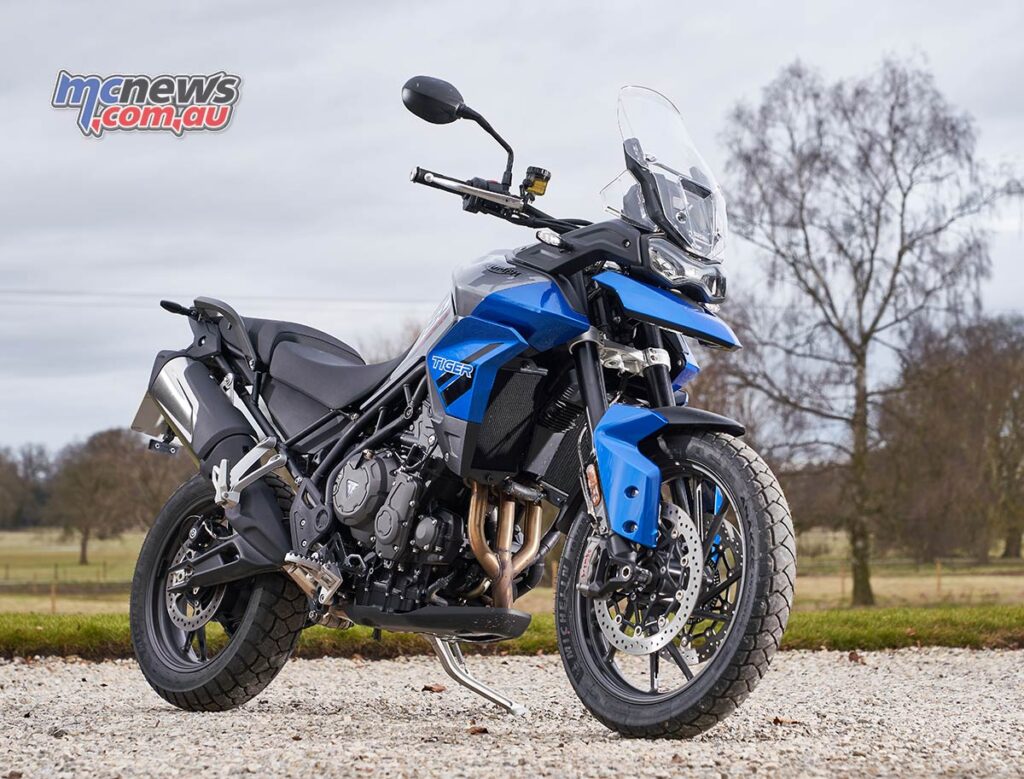
The Tiger 850 shares the same novel T-plane crank as the 900 with a 1-3-2 firing order that gives the British triple a unique sound, which adds to its personality.
The throttle delivery is liquid smooth and effortless. At slow speeds the connection is soft, which makes riding a doddle around town. Triumph has moved the bulk of the torque lower down in the rev range compared to the 900. There is lovely, useable drive on tap at low speeds, which then builds strongly when accelerating.
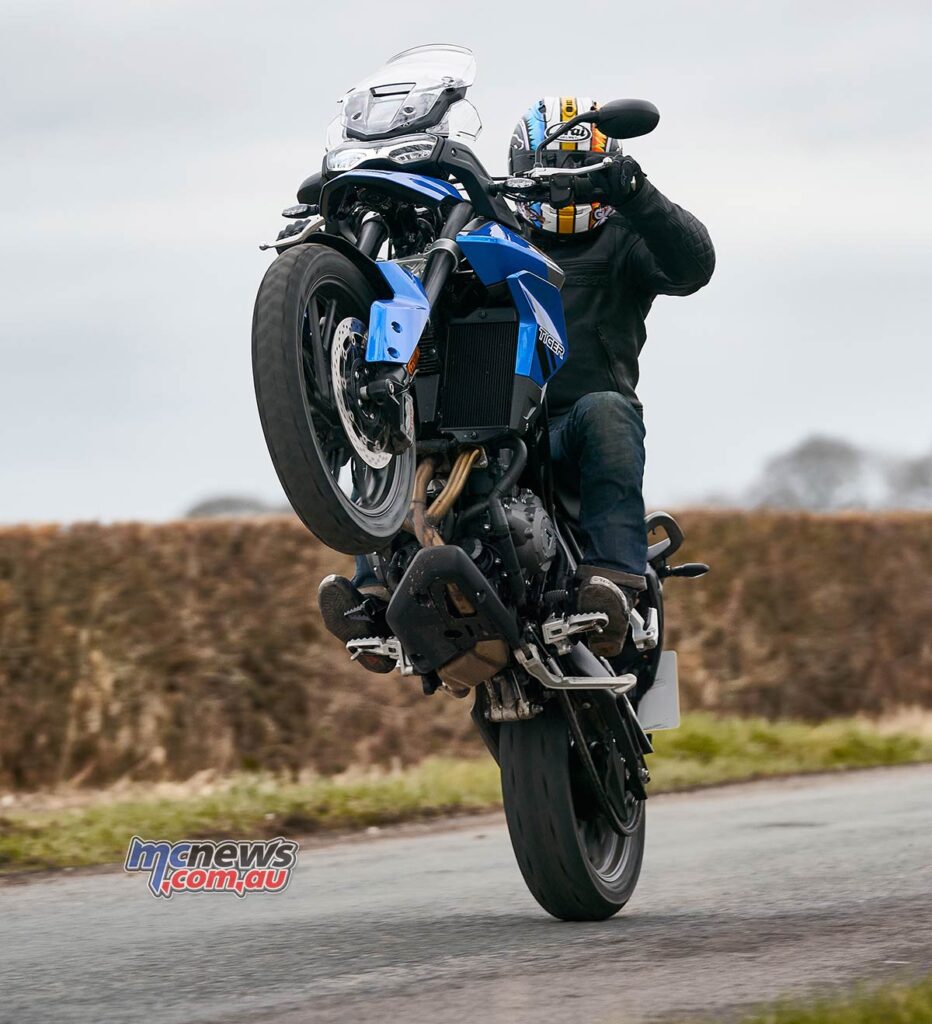
According to the spec sheet, the 850 is 10 hp down on peak power compared to the 900 but that’s only when you’re in the top quarter of the rev range. For the majority of the test, I was nowhere near full throttle so I never felt short-changed by the power drop.
However, I’m below average height and weight, and never rode two-up or with the optional luggage fitted, so I was experiencing the Sport’s power-to-weight at its best. As mentioned, it felt a little buzzy at 140 km/h, just above 6000 rpm in top, which might intrude on long, fast rides. And I would imagine being fully loaded and two-up that you’d miss the extra power and torque of the Tiger 900. But for everyday riding, most riders, especially riders with less experience or sporting pretensions, will find the power more than enough.
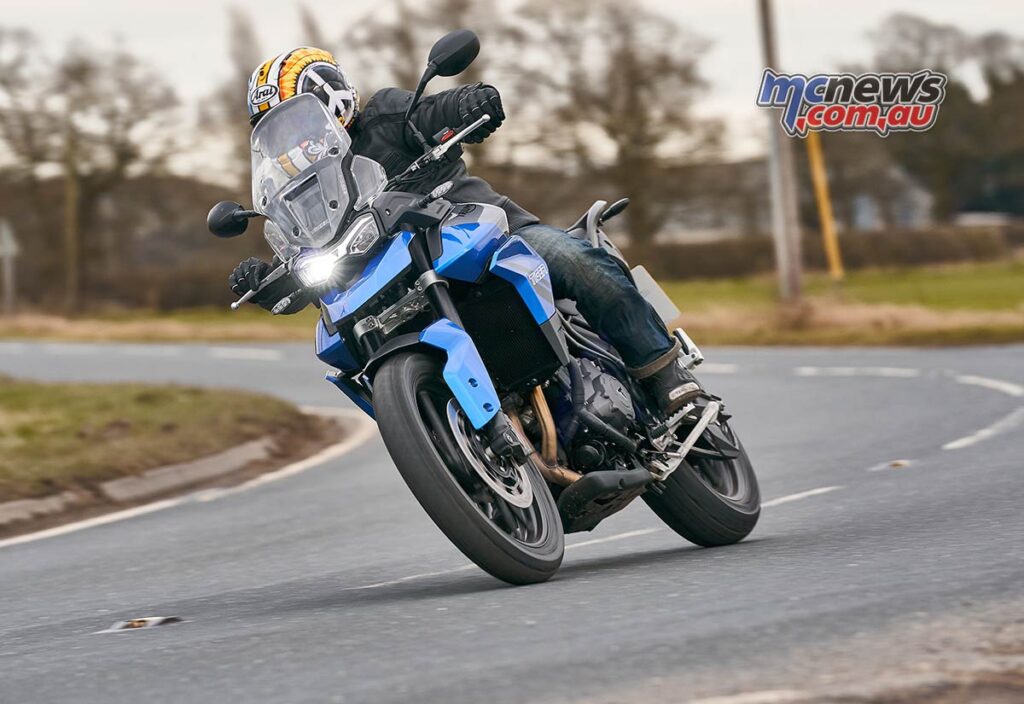
There are two riding modes to choose from, Road and Rain, both with dedicated throttle maps and traction control, while ABS remains constant in both modes. Remember, it’s conventional ABS and TC, not lean-sensitive. Rain mode still produces full power but with a softer power delivery and more intrusive TC. The power delivery is so soft and forgiving in the normal Road mode that lean-sensitive TC and ABS is hardly needed, but I guess some may prefer the added security and margins it provides.
Fewer rider aids save on cost
To reduce costs, and so the 850 doesn’t compete directly with the Tiger 900, you’re not getting all the electrics. You still get two riding modes, traction control, and ABS – with those outstanding Brembo stoppers – but there isn’t that IMU which gives you lean-sensitive traction control and ABS, like on the Tiger 900. There are two sides to this. The first is the Tiger 850 is aimed at a certain type of rider; one who’s not likely to be peg-scraping on every apex. Additionally, given the Brembo Stylema brakes are excellent, and the standard ABS (just monitoring wheel speed) is also superb, do you need lean-sensitive traction control on a bike with less than 90 hp and excellent mechanical grip? I remember riding sports bikes with over 150 hp, and no rider aids.
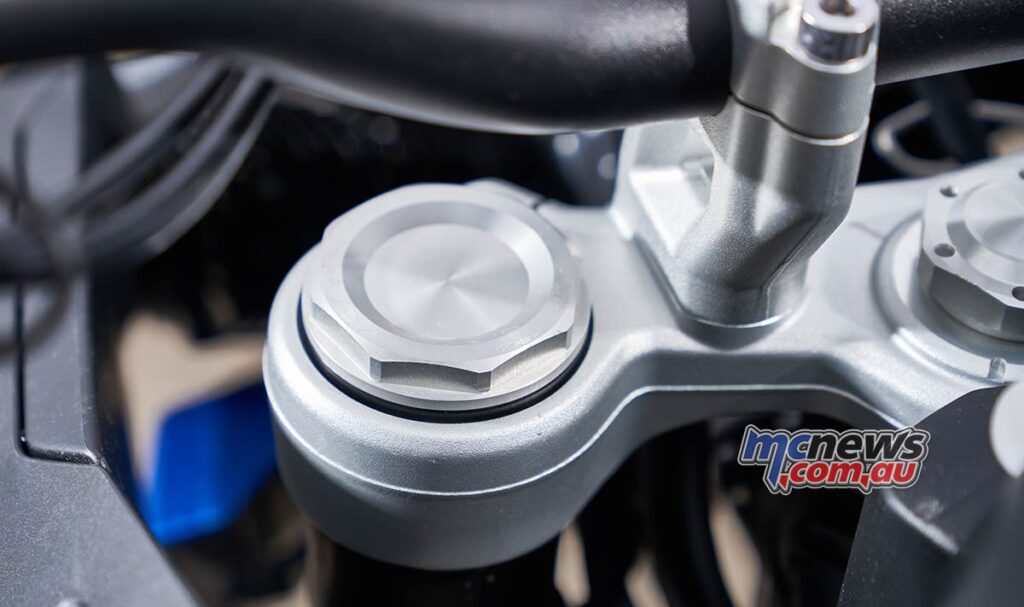
The counter-argument is that the Tiger 850 is aimed at new riders who would appreciate the safety net of cornering ABS and TC, especially as they are more likely to make a mistake.
In my opinion, I think the Rain mode is enough to keep new riders safe in tricky conditions. It softens the delivery, increases the traction intervention, and the standard ABS is more than enough – but again, I’m experienced, I learnt to ride on an aggressive two-stroke, and a new rider may be looking at the specs and lack of IMU with a little apprehension.
Taking into account the new bike’s accessibility in terms of price, the switchgear and five-inch TFT instrumentation are of a high standard. I really liked the clocks, and the ability to change the style and look is a nice touch. The overall finish is of a high quality, with the full LED lights and DRL a spec higher than the 900.
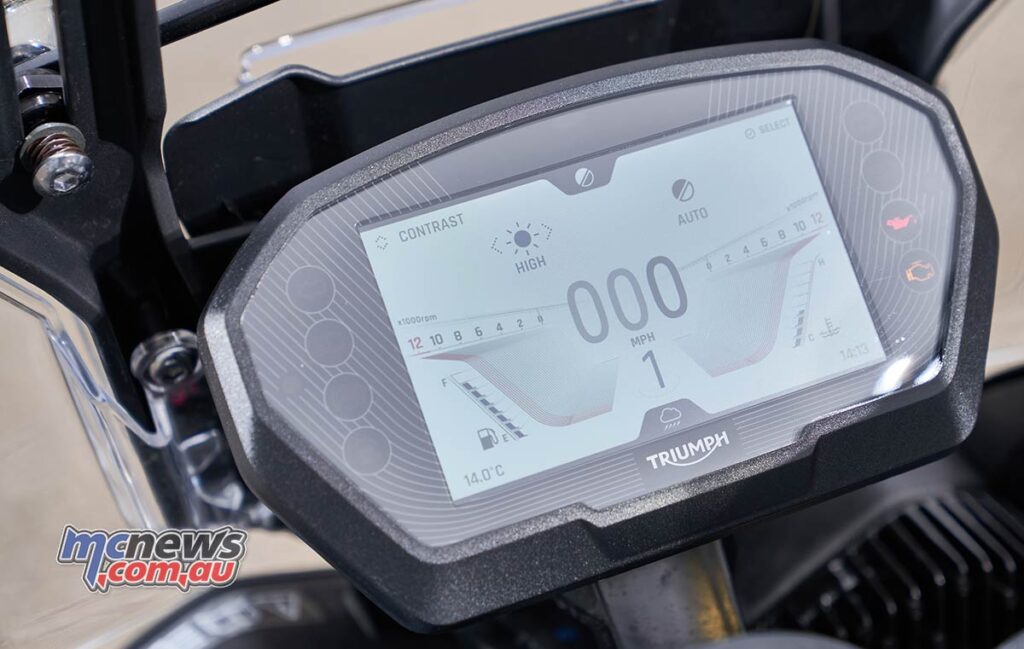
There are 60 accessories to select from, including a low, 790 mm seat-option, and a range of hard luggage, plus the usual cosmetic trinkets. I think the quick-shifter would be a nice touch, and possibly heated grips.
Verdict
The charismatic-sounding triple has real-world performance and loads of useful torque. It’s enjoyable and energetic, while the handling, much like the engine, is far more capable than I was expecting. The Sport may be relatively straightforward, but it works and for this type of bike and it’s hard to fault, especially when compared to the similar competition, like the F 750 GS from BMW.
This is an impressive package at an inexpensive price. It’s a versatile, fun bike, which even has some simple charm to it. It will be interesting to see if new buyers are perturbed by the lack of advanced rider aids. I can see this being a top-seller for Triumph in 2021.
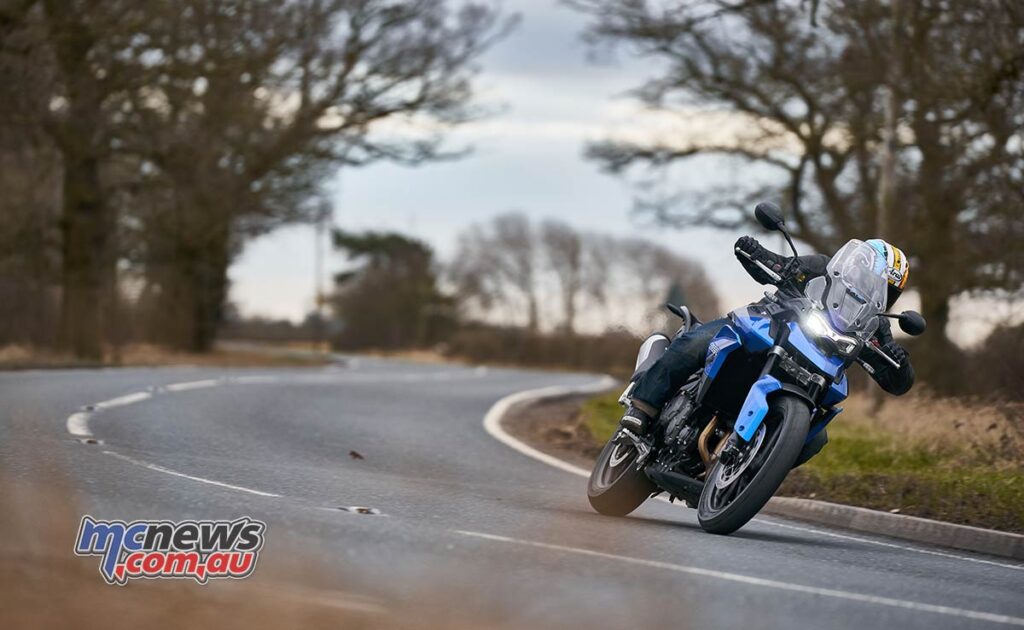
Triumph Tiger 850 Sport Specifications
| Engine & Transmission | |
| Type | 888 cc Liquid-cooled, 12 valve, DOHC, inline 3-cylinder |
| Bore / Stroke | 78.0 mm / 61.9 mm |
| Compression | 11.27:1 |
| Maximum Power | 85 PS / 84 hp (62.5 kW) @ 8,500 rpm |
| Maximum Torque | 82 Nm (60lbft) @ 6,500 rpm |
| Fuel System | Multipoint sequential electronic fuel injection |
| Exhaust | Stainless steel 3 into 1 header system, side mounted stainless steel silencer |
| Final Drive | O-ring chain |
| Clutch | Wet, multi-plate, slip & assist |
| Gearbox | 6 speed |
| Chassis | |
| Frame | Tubular steel frame, bolt on sub frame |
| Swingarm | Twin-sided, cast aluminium |
| Front Wheel | Cast alloy, 19 x 2.5 in |
| Rear Wheel | Cast alloy, 17 x 4.25 in |
| Front Tyre | 100/90-19 |
| Rear Tyre | 150/70R17 |
| Front Suspension | Marzocchi 45mm upside down forks |
| Rear Suspension | Marzocchi rear suspension unit, manual preload adjustment |
| Front Brakes | Twin 320mm floating discs, Brembo Stylema 4 piston Monobloc calipers. Radial front master cylinder, ABS |
| Rear Brakes | Single 255mm disc. Brembo single piston sliding caliper, ABS |
| Instruments | 5″ TFT screen |
| Dimensions Weights | |
| Length | 2248 mm (88.50 in) |
| Width (Handlebars) | 830 mm (32.67in) |
| Height Without Mirrors | 1410-1460 mm (55.51-57.48 in) |
| Seat Height | 810-830 mm (31.88-32.67 in) |
| Wheelbase | 1556 mm (61.25 in) |
| Rake / Trail | 24.6 ° / 133.3 mm (5.24 in) |
| Dry weight | 192 kg (423 lb) |
| Fuel Tank Capacity | 20 litres (5.28 US gal) |
| Fuel Consumption | |
| Fuel Consumption | 55.4 mpg (5.2 l/100km) |
| CO2 | 119 g/km / EURO 5 |
| RRP | From $17,890 Ride Away |
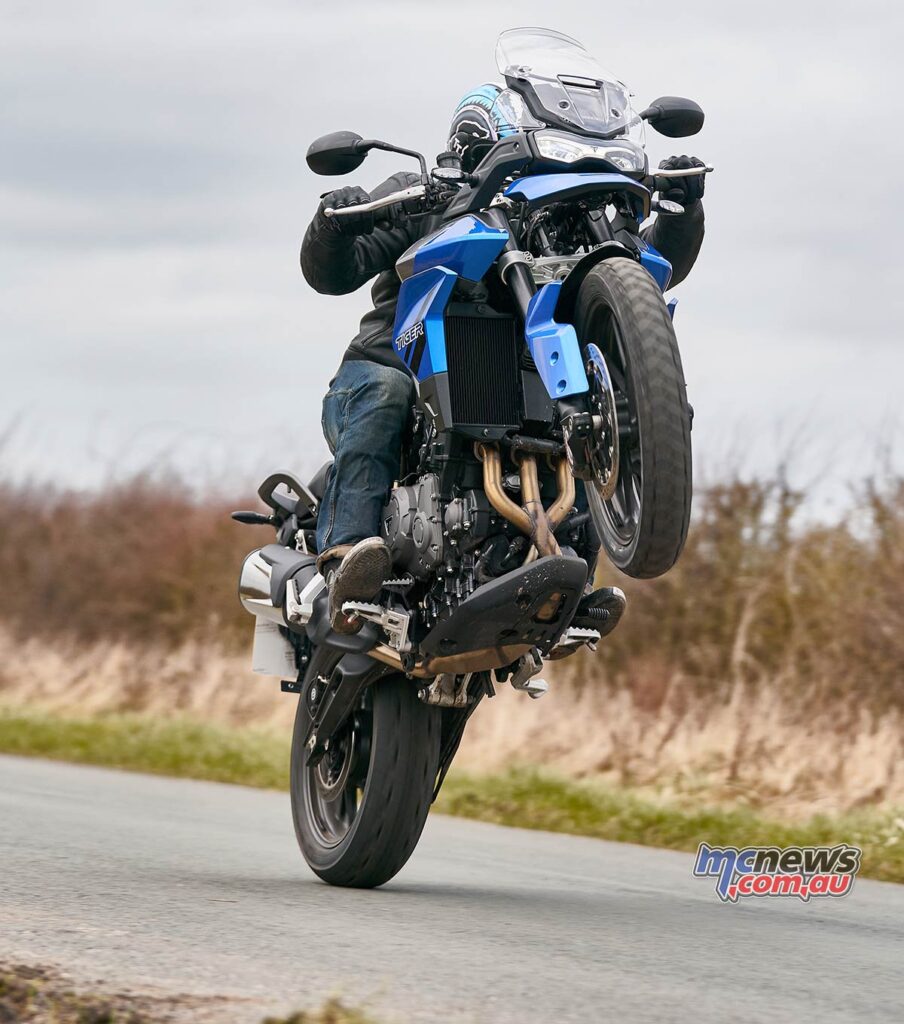
Images by Joe Dick


